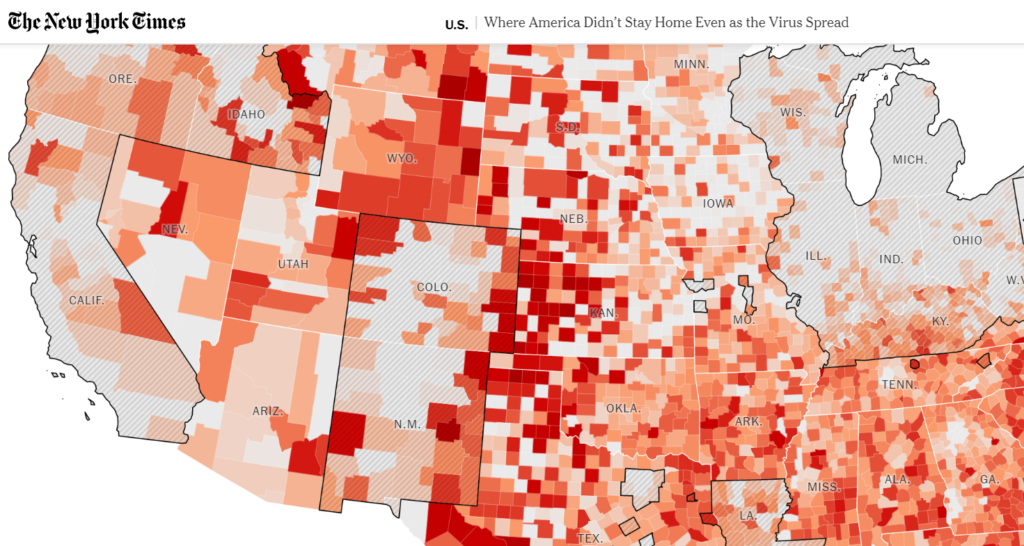A Virus that Does Not Stop at State Borders

Earlier this week Governor Murphy issued a warning to residents living in states with more laxed social distancing and no stay at home orders. He warned that when New Jersey flattens the curve and gets on the other side of the COVID-19 outbreak, these residents may not be immediately welcomed in New Jersey. “We’re not going to break the back of this curve just to be exposed to the lowest common denominator,’ Murphy said. “We’re not going to pay that price and have to watch that movie again. I don’t want anybody coming in from another part of the country where they had lax restrictions and undoing what we have done.”
Data released today from the NY Times graphically illustrates the Governor’s concerns. Using location data collated from Cuebiq, a data intelligence firm, that measures the range that people travel each day, found uneven compliance to social distancing in the United States. As the map illustrates, in New Jersey by March 16th, several counties (including the hardest hit in the state) saw the average distance traveled fall below two miles. By March 19th all counties except Salem and Cumberland reached that status. And by March 24, the remaining two counties joined the list. So many New Jersey residents have been following stay at home and social distancing orders for over two weeks now. This is consistent with data released this weekend, where New Jersey received an overall “A” grade on social distancing compliance.
So while New Jerseyans are overall compiling (although greater compliance is always necessary), the same is not true throughout the country. The NY Times data map clearly shows that many residents in southern states have not changed behaviors as of March 26. This is tied often to state policies that have not issued “stay at home” orders as early as New Jersey. Now some of that is slowly changing. Yesterday Governor DeSantis in Florida, who has for weeks resisted a stay at home order, has issued such an order for Floridians. This was then followed by neighboring states such as Mississippi and Georgia. But as of this writing, twelve states still have not ordered residents to stay at home. The lack of a nationwide policy can lead to new problems down the road for states like New Jersey, even though the Governor took early action.
Governor Murphy’s warning is particularly important as it takes weeks for the impact of social distancing to be evidenced in the testing data. As we all know by now, the incubation time for COVID-19 can be anywhere from two to fourteen days. And this is even more complicated by the testing process itself. Despite an increase in testing nationwide, Quest and other private testing companies report a backlog of testing results. This leads to often a four- to five-day delay after a patient is tested to receiving those testing results. The data on positive cases may be close to a week behind in real time. And we are still just testing the sickest of the sick—which means we are probably underestimating the scope of infected individuals.
The Governor did not give details on what his warning to other states means in practice. And as this crisis continues to evolve things will continue to change. However, one thing is clear that the virus does not stop at state borders. And the patchwork of state policies around social distancing and stay at home orders, without a nationwide mandate, may sadly accelerate the spread that we are trying desperately to slow.










Leave a Reply